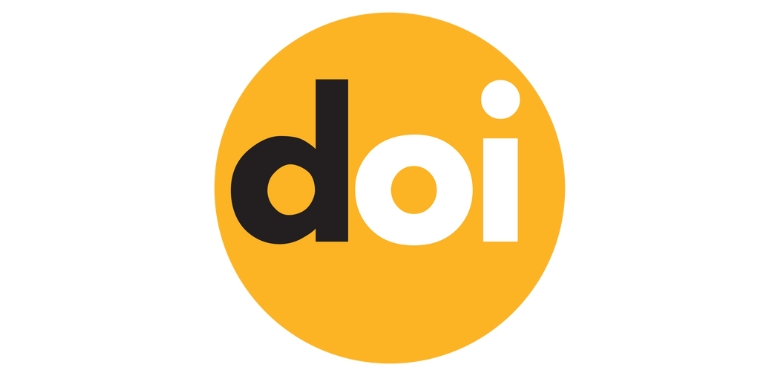Problems and prospects of using artificial: Intelligence technology in the field of public administration of taxation: the experience of Iran
DOI:
https://doi.org/10.63053/ijset.110Keywords:
Artificial Intelligence, Public Tax Administration, Oil and Gas Revenue, Digital Transformation, IranAbstract
The Islamic Republic of Iran’s tax system, influenced by its historical dependence on direct oil and gas revenues, is not considered developed in terms of its administrative capacity and technological infrastructure. This long-standing dependence has reduced the need for innovation in tax revenue collection and management and as a result, digital transformation, including the use of artificial intelligence (AI) technology, has faced structural, technological, and institutional challenges. This research, using an analytical-comparative approach, examines the problems and prospects of AI application in Iran’s general tax administration, especially in the key oil and gas sector. The data is extracted based on official reports, budget documents and statistical information on the performance of industrial and economic sectors. The findings show that despite the implementation of the “Comprehensive Tax System” plan and progress in digitizing processes, serious shortcomings, including the continuation of paper processes, lack of database integration, limited transparency in tax revenue allocation and the lack of indigenous AI infrastructure, have prevented the full use of technological capacities. At the same time, opportunities such as the use of AI in tracking oil production (satellite imagery and pipeline sensors), automated analysis of financial statements, budget planning based on oil price fluctuation forecasts and provision of chatbot-based tax advisory services have been identified. The paper concludes that a successful transition to a smart tax system in Iran requires the simultaneous implementation of four axes: deepening digital transformation, structurally combating corruption, developing indigenous technological capacities, and legally requiring financial transparency. These changes can create a multi-fold capacity to increase efficiency, reduce tax evasion and enhance public trust
References
Adelekan, O.A., Adisa, O., Ilugbusi, B.S., Obi, O.C., Awonuga, K.F., Asuzu, O.F., & Ndubuisi, N.L. (2024). EVOLVING TAX COMPLIANCE IN THE DIGITAL ERA: A COMPARATIVE ANALYSIS OF AI-DRIVEN MODELS AND BLOCKCHAIN TECHNOLOGY IN U.S. TAX ADMINISTRATION. Computer Science & IT Research Journal, 5(2), 311-335. https://doi.org/10.51594/csitrj.v5i2.759
Gekhaeva, P., Bolotkhanov, E., and Ismoilova, S. (2023). Global Digital Transformation Trends: Financial-Economic Sector. SHS Web Conf. International Scientific and Practical Conference on Social Sciences and Humanities: Scientific Challenges of the Development of Modern Society, 172, pp 1-5. https://doi.org/10.1051/shsconf/202317202025.
Souguir, Z., Lassoued, N., Khanchel, I., and Bejaoui, E. (2025). Behind the Screens: Digital Transformation and Tax Policy. Journal of Risk and Financial Management, 18(7), 390. https://doi.org/10.3390/jrfm18070390.
Premkumar, G., Ramamurthy, K., and Saunders, C. S. (2005). Information processing view of organizations: An exploratory examination of fit in the context of interorganizational relationships. Journal of Management Information Systems, 22(1), 257–294.
Agyei, S. K., Marfo-Yiadom, E., Ansong, A., and Idun, A. A. A. (2020). Corporate tax avoidance incentives of banks in Ghana. Journal of African Business, vol. 21, 4, pp. 544–559.
Zhou, S., Zhou, P., and Ji, H. (2022). Can digital transformation alleviate corporate tax stickiness: The mediation effect of tax avoidance? Technological Forecasting and Social Change, 184, 122028.
Jensen, M. C., & Meckling, W. H. (1976). Theory of the firm: Managerial behavior, agency costs and ownership structure. Journal of Financial Economics, vol. 3, 4, pp.305–360.
Tiantian, G., Hailin, C., Zhou, X., Ai, S., and Siyao, W. (2023). Does corporate digital transformation affect the level of corporate tax avoidance? Empirical evidence from Chinese listed tourism companies. Finance Research Letters, vol. 57, 104271.
Alqatan, A., Hussainey, K., Hamed, M., and Benameur, K. (2024). Impact of digitalization on reporting, tax avoidance, accounting, and green finance. IGI Global.
Chhaidar, A., Abdelhedi, M., & Abdelkafi, I. (2023). The effect of financial technology investment level on European banks’ profitability. Journal of the Knowledge Economy, vol. 14(3), pp. 2959–2981.
Tawakol, M., and Habibi Badrabadi, M. (2022). Analyzing the mindset of actors towards information technology in the tax system (with a structuration theory approach). Applied Sociology, vol. 33, 3, pp. 1-28. doi:10.22108/jas.2022.129099.2125.
Reyes-Tagle, G., Dimitropoulou, C., and Rodríguez Peña, C. C. (2023). Digitalization of Tax Administration in Latin America and the Caribbean: Best-Practice Framework for Improving E-Services to Taxpayers. Inter-American Development bank. IDB Monograph, 1153.
Mojtaheed, A., and Ahmadian, A. (2007). The Effect of Government Tax Revenues on Social Welfare in Iran. Economic Research, vol. 7, 1, (Taxation Special Issue), pp. 45-71.
Lari Dasht-e-Bayaz, M., Ghaem-e-Maghami, K., and Kahrami, Q. (2016). Investigating the factors affecting tax evasion in South Khorasan Province with an emphasis on cultural components. Value and Behavioral Accounting Quarterly, vol. 1, 1, pp. 139-164.
OECD (2016). Technologies for better tax a dministration: A practical guide for revenue bodies, OECD Publishing: Paris.
OECD (2019).Tax administration 2019: comparative information on OECD and other advanced and emerging economies, OECD Publishing: Paris.
Kalantari-Bangar, M., Nazari, A., and Fadaei, A. (2013). A Review of the Performance of Tax System Transformation. Financial and Economic Policies, vol. 1, 1, pp. 59-80.
Tax Affairs Organization Operational Program. 2019.
Downloads
Published
How to Cite
Issue
Section
License
Copyright (c) 2025 Authors

This work is licensed under a Creative Commons Attribution 4.0 International License.












